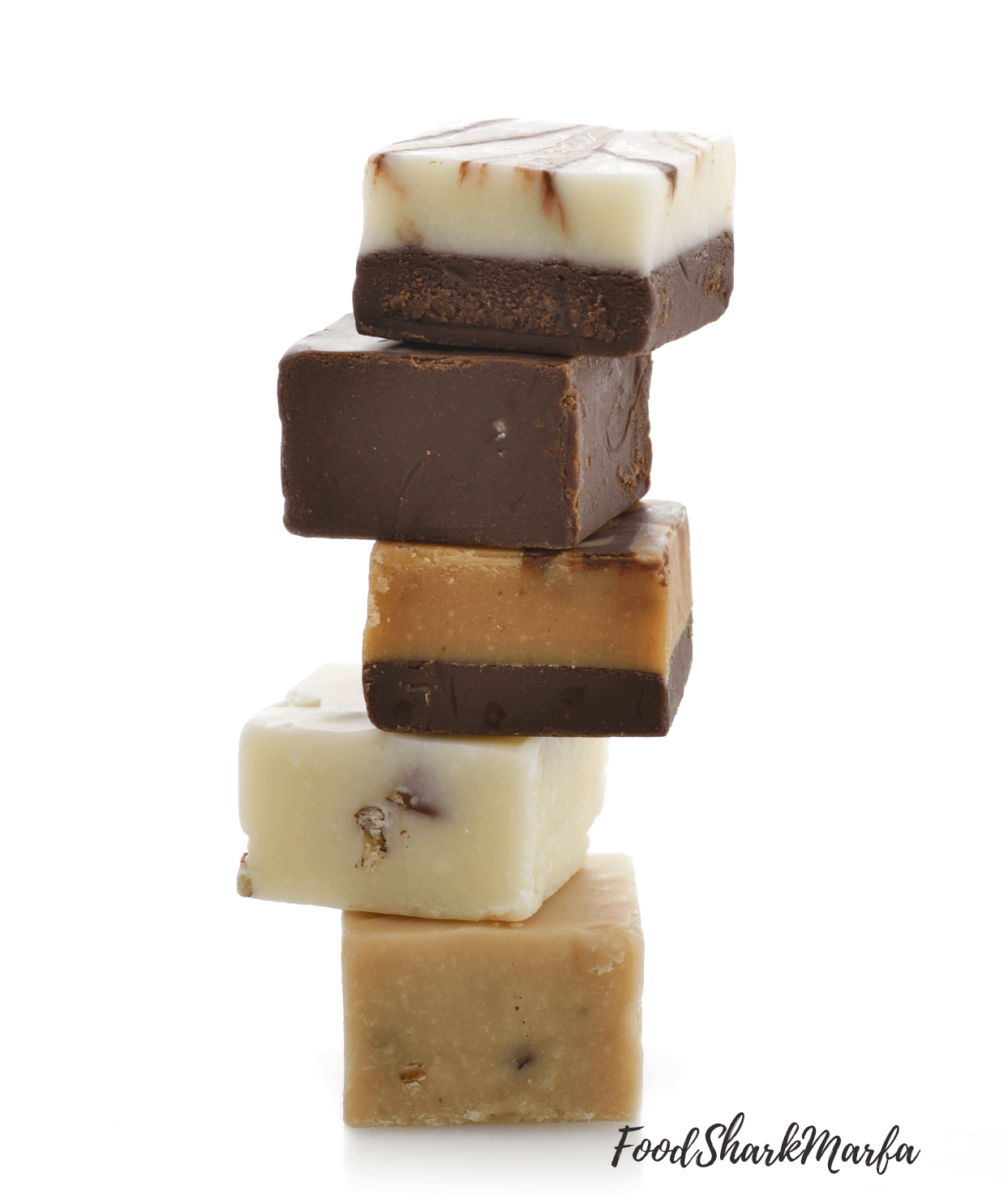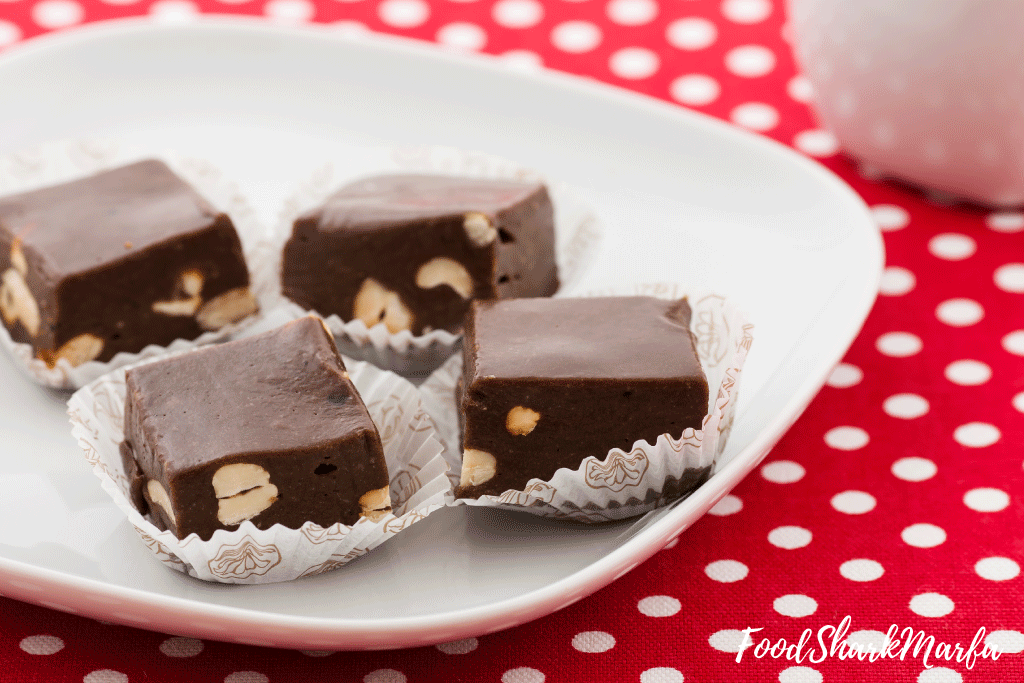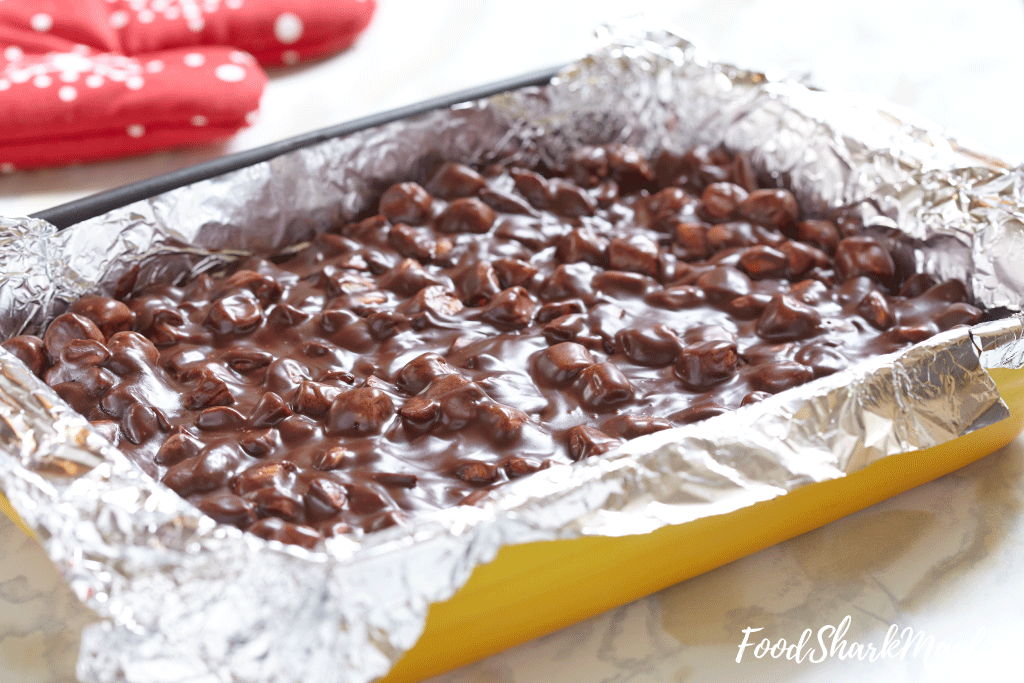Homemade, or even store bought fudge is a delicious treat for the holidays or even just when you want something sweet to nibble on. With some of our favorite fudge flavors being vanilla, chocolate, peanut butter and maple walnut, it’s even better knowing that flavors for homemade fudge flavors are only ever limited by our imagination!

If you are thinking of making a large batch of fudge in preparation for the holidays, or you prefer just to eat a little of this very sweet treat occasionally, it is good to know exactly how you can store it to keep it fresh for longer.
A common question is ‘can you freeze fudge’ and the answer is yes, you can freeze fudge. Depending on what extra ingredients are in the fudge, it should keep at its best for around three months, or even as long as 12 months in the freezer. However, for fudge to freeze well with least loss of texture, it will need to be packed in a specific way.
Continue reading to learn more about fudge itself, what you need to consider before you freeze fudge and how you need to wrap it to keep it at its best in the freezer.
A Short History of Fudge
Fudge itself is defined as being a crystalline candy and it is controlling the crystallization of the sugar solution – usually through beating and temperature control - that gives fudge the texture which is so different to that of caramel and other candies.
Interestingly, fudge as candy has not been around for that long, although the word fudge has been in existence for longer. The word ‘fudge’ can mean nonsense, it can be used to express annoyance, or it can also mean to ‘fit together in a clumsy manner’.
A recipe for chocolate caramels was published in an 1870 Maryland cookbook and this recipe was vaguely similar to today’s fudge. Some suggest that fudge first developed from a poorly made or ‘fudged’ batch of a recipe such as this which had been over-stirred. So, instead of it turning out as a smooth and chewy caramel, it ended up a crumbly and creamy fudge!
Whichever way fudge did evolve, it was known (from a letter found in the archives at Vassar College) to be sold at a Baltimore grocery store for 40 cents a pound in 1886. The above letter writer was able to obtain the fudge recipe from the store and after making 30 lbs. of it for the Vassar Senior Auction, she guaranteed its popularity, not only at Vassar, but at other women’s colleges, as word of the tasty candy spread. Wellesley College added marshmallows to their fudge recipe, while Smith College added molasses and brown sugar!

The recipes for fudge at this time were delicate and over time, the recipes evolved to include ingredients such as cornstarch and the use of sweetened condensed milk instead of cream and milk. This mean that the recipes were able to give more consistent results to home cooks who may not have had access to equipment such as candy thermometers.
Because fudge could be so difficult to make at home, confectioners began to market their fudge where there were crowds, such as at large events and at vacation destinations, where those on vacation would spend money on luxuries which they would not usually buy at home. Unlike chocolate, fudge also stored and traveled extremely well, making it popular for souvenir gifts.
By the late 1880s, fudge shops were found in popular destinations such as Niagara Falls and Atlantic City and this helped firmly establish fudge as a vacation souvenir, a choice still popular with today’s vacationers.
Homemade fudge is also popular for the holiday season and for gifting and it must be said that homemade fudge is usually much nicer than that found in the local grocery store!

Unfortunately, homemade fudge does not keep as long as store bought fudge and in the next section, we look in more detail at storing fudge.
What Are the Different Ways to Store Fudge?
Although homemade fudge will not last as long as store bought fudge, in both types, the fat and sugar content helps fudge keep longer than other baked goods and it also makes it unpopular with typical food spoilers such as mold and bacteria.
This means that fudge rarely develops mold or rots, but, its taste and texture will decline as it ages. If your fudge develops cracks across its surface this is a sign that it is drying out from exposure to the air. Although this may not affect its taste much at this point, it will start to affect its quality and as more cracks develop, its quality will decline. If the cracks are large and/or deep, dispose of the fudge as it is too old to be enjoyed.
Fudge that is mushy, or hard and oily, or has liquid on top should be trashed as this is also past its best and will not taste as it should.
Homemade fudge will keep for between one and two weeks at room temperature wrapped in wax or parchment paper inside an airtight container but note that the fudge will ‘ripen’ over the first day. This means its texture will change to become velvety and creamier. If you do keep fudge at room temperature, it needs storing away from direct heat or light sources as this will cause it to sweat and become mushy.
If you put homemade fudge wrapped in wax or parchment paper inside an airtight container into the refrigerator it will stay at best quality for as long as three weeks when stored at the back of the refrigerator away from temperature fluctuations. Be careful to separate the fudge before putting in the refrigerator though, otherwise it will stick together.
In the freezer, when properly wrapped, fudge will store at its best for three months and potentially as long as 12 months.
Freezing fudge should have little impact on the texture and flavor of the fudge, as long as it has been wrapped and stored properly in the freezer, although there can be a slight change in the texture.
What Should I Consider Before Making Fudge for Freezing?
Although the options for fudge flavors are many, there are a few things worth knowing before making fudge that you want to freeze.
How well your fudge will store in a cupboard, the refrigerator or the freezer is not only dependent on how it is wrapped - as I will explain in the later section - but also on what ‘extras’ you have put into the fudge.
Depending on the type of milk or cream used in the fudge, there is a risk that the fat in the milk or cream will separate from the other non-fat/water components. Although this will not alter the taste of the fudge, it can alter the texture somewhat when thawed. This is not as much of an issue when condensed milk is used.
A traditional style dense fudge will usually freeze better than light fudge – such as the type made in the microwave. Spices such as cloves, cinnamon or nutmeg will intensify in flavor when frozen, while an imitation vanilla flavor used in fudge will not hold up as well, so do use a pure vanilla extract if you want to freeze the fudge.
A heavy hand with powdered sugar can cause the fudge to end up crumbly and dry and if you sprinkle nuts on the outside of fudge, they’re more likely to come loose during freezing. You can resolve this by mixing nuts well into the fudge when you make it, or just top the thawed fudge with nuts when you are ready to eat it.
Fresh fruit in fudge can cause problems as it contains a lot of water which can alter the texture when frozen and thawed. Dried fruits are more stable in fudge, but they can lose flavor when frozen.
How to Freeze Fudge
If you want to freeze a whole batch of fudge, then you have the option to freeze it as the full block and then cut it up once it has been thawed. You should only really do this though if you need to use the full block for baking or desserts.
Otherwise freeze fudge in snack-sized pieces, but do avoid cutting it too small, as the smaller the pieces are, the higher the risk of freezer burn.
If you want to freeze different varieties of fudge, wrap each flavor separately to stop the flavors mixing.
Before wrapping for freezing, the fudge will need to be at room temperature at the most, or preferably pre-chilled in the refrigerator. To freeze fudge, you will need some aluminum foil or plastic wrap and some wax or parchment paper as depending on how much you are freezing, you will need to pack the fudge up in layers so it is more compact in the freezer.
To start with, place a big piece of aluminum foil or plastic wrap out on the countertop and make a single layer of some of the fudge in the middle of it. Arrange the fudge so each piece has a slight gap between it and once you have made the first layer, place a piece of wax paper or parchment paper over the top.

Then add the second layer of fudge, then paper, then fudge and so on until the fudge is all stacked in layers. Fudge needs to be wrapped in layers to reduce its exposure to air and risk of freezer burn and to stop it losing as much moisture when it freezes.
At this point, you can now securely wrap the aluminum foil or plastic wrap over the stack and if there are gaps at the end then add another piece of aluminum foil or wrap to ensure the fudge is completely sealed in. The full package can then be placed in a Ziplock or freezer bag or Tupperware container. Remember to remove the excess air from bags before sealing and to write on the bag the day that you made it and what flavor/s it is.
One thing to avoid with freezing fudge is the use of cardboard containers. Not only does using a cardboard container allow fudge to absorb other odors from the freezer, but it can also absorb the odor of the cardboard. Also known as Trans-2-nonenal, the molecule that causes this effect creates an off flavor with notes of paper or wet cardboard. This molecule can also be found in beers when aging.
Once the fudge is completely wrapped it can be placed in the freezer. Put it to the back or the bottom of the freezer where the temperature is constant rather than near the doors where air flow is variable.
How to Thaw Frozen Fudge
Frozen fudge is best thawed overnight in the refrigerator or in an emergency, it can be thawed at room temperature for a couple of hours. Whichever way you do thaw it, avoid exposing it to any temperature fluctuations as this can affect both the texture and the flavor.
Always defrost fudge with its wrappers still on as this will allow condensation to form on the wrapper rather than the fudge. If you thaw it in the refrigerator, just leave it at room temperature for 15 minutes or so before eating. If condensation does form on the fudge - also known as ‘sweating’ - just leave the fudge until the moisture has disappeared. It is then ready to eat.
Once fudge has been thawed, store it in the refrigerator and consume it within a week. It cannot be re-frozen.
If you have an excess of fudge, it can be used to sprinkle on luxury drinks or ice cream, baked into fudge cookies, muffins or brownies or used for chocolate fudge topping. An indulgent fudge cheesecake is another option, or you may want to add it to some homemade ice cream.

Can I Freeze Fudge to Set It Properly?
Unfortunately, if your fudge has not set properly, putting it in the freezer will probably not help much. Instead, try adding a little powdered sugar and beat well until the fudge starts to firm up. Go easy with the sugar though as too much will give you crumbly and dry fudge.
The other option to set fudge is to reheat it and add a bit more evaporated milk (or cornstarch and water) and beat it well as it cools down.
If worst comes to worst, try a second batch and use the first batch for truffles or melt some chocolate and use the fudge along with other favorite treats to top an easy chocolate bark!
Freezing Fudge – The Bottom Line
As I have outlined in this post, yes you can freeze fudge and as long as it is wrapped properly then there should be little effect on its quality and taste when thawed.
This means there is absolutely no excuse now for not taking the opportunity to make your fudge before the holiday season is in full flow!
If you have enjoyed reading this post, do take the opportunity to share it with your friends. I would also love to hear any of your comments or suggestions around freezing fudge – just jot them down in the comments box below.


Hi there, thanks for your information about freezing fudge, very helpful as I have never frozen it before but I made 3 different kinds and want to freeze half of each….thank you so much. Sue in MI
Once I have thawed the frozen fudge, is it ok to keep it at room temperature? My plan is to give it away as Christmas gifts.